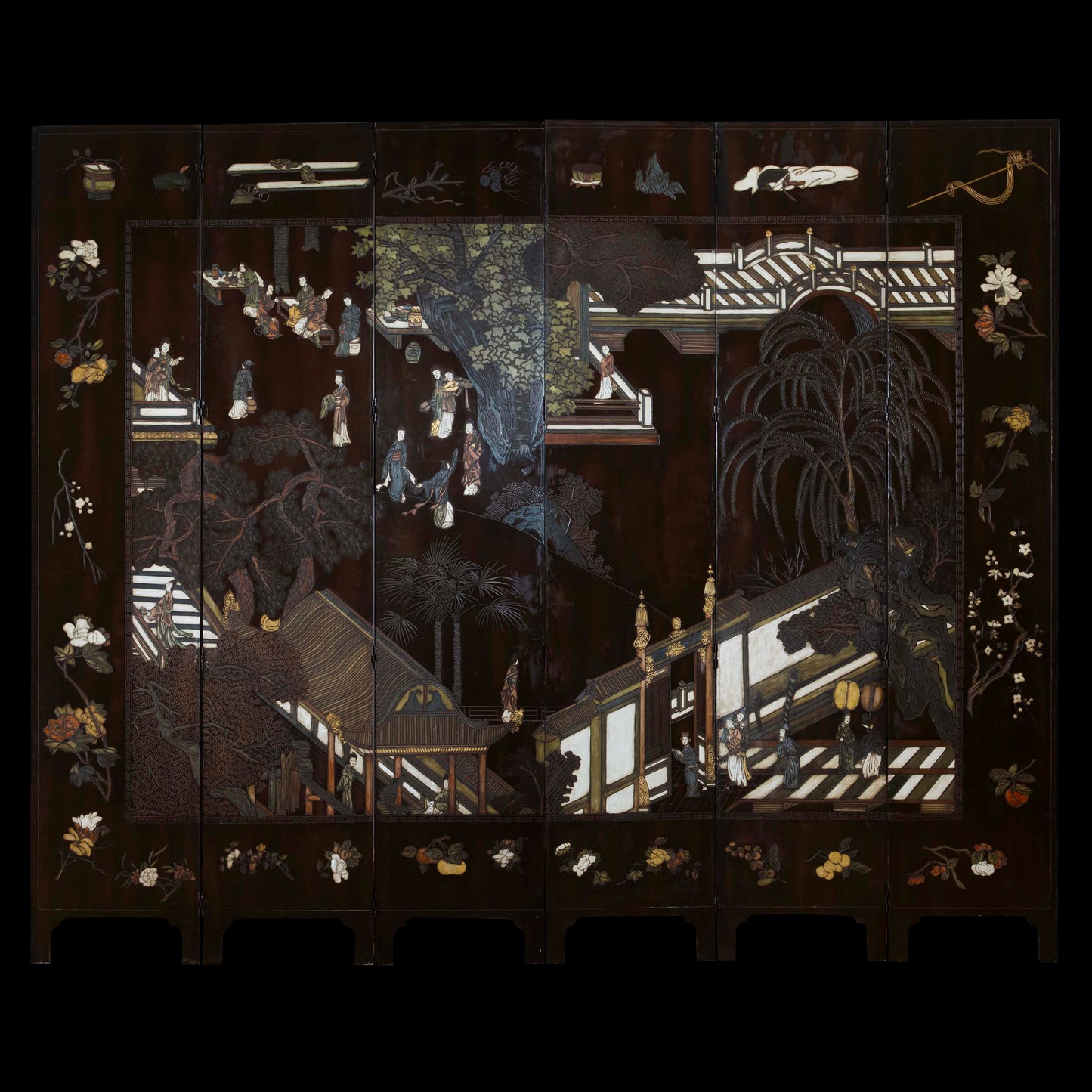
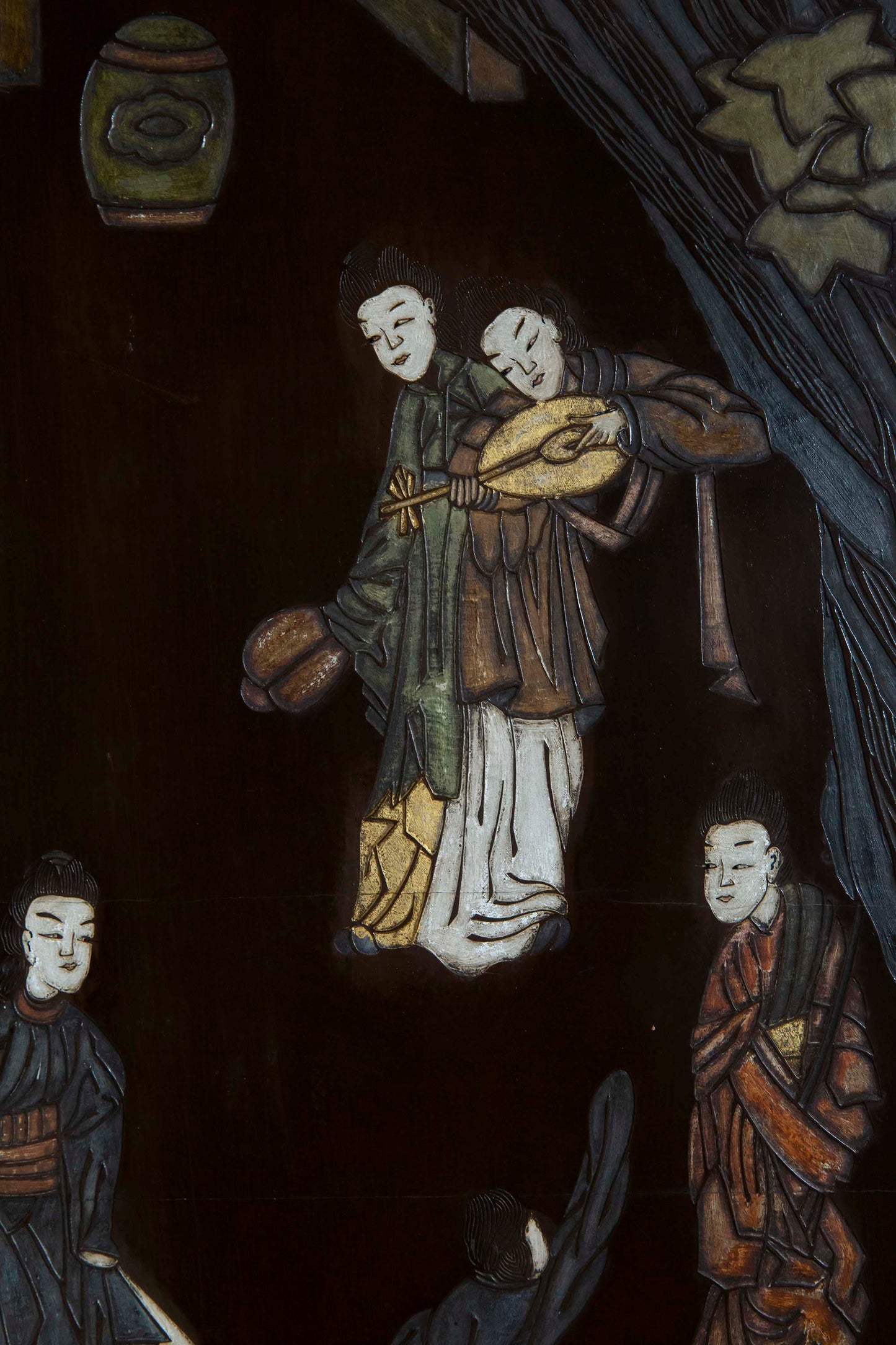
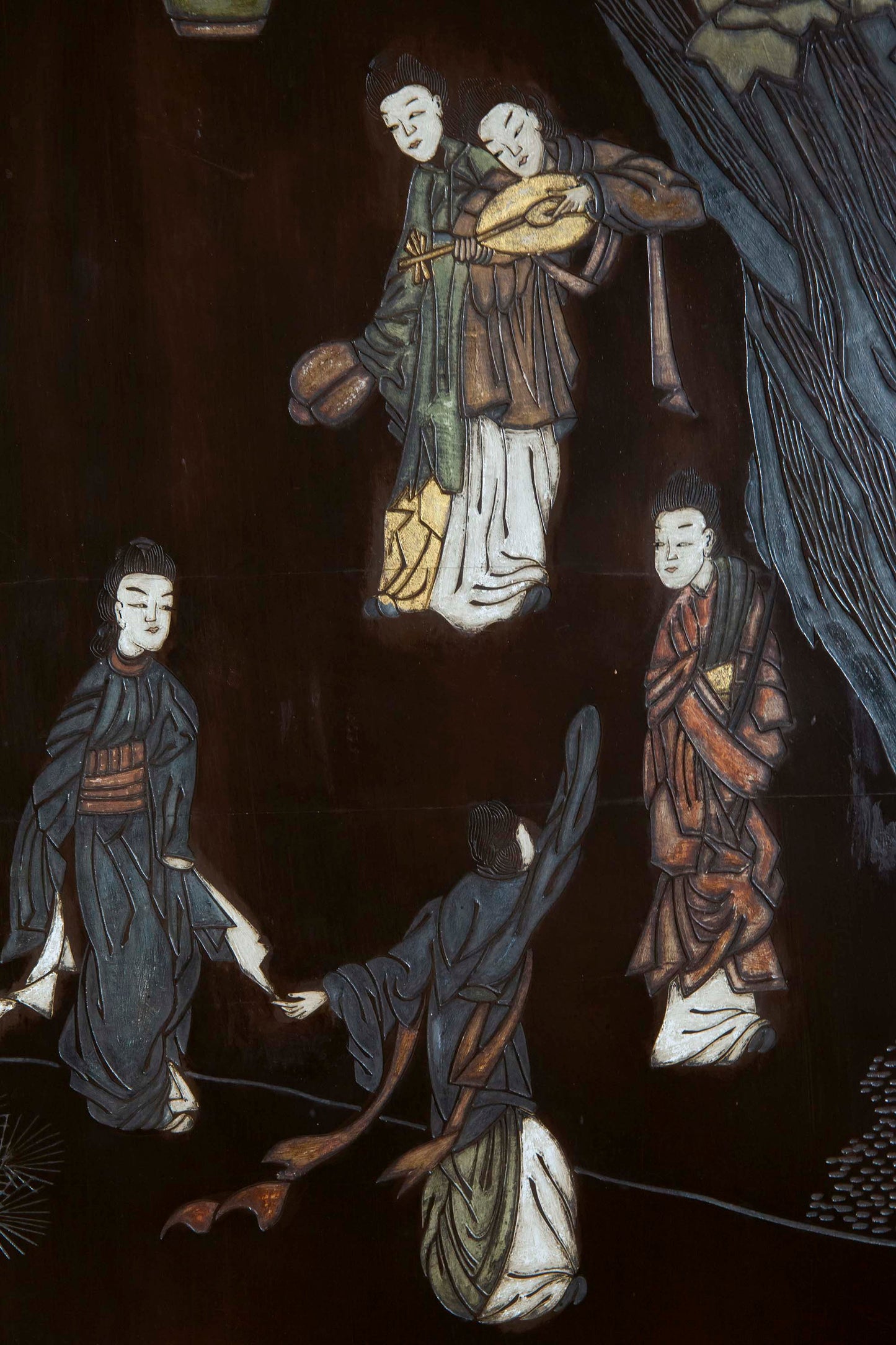
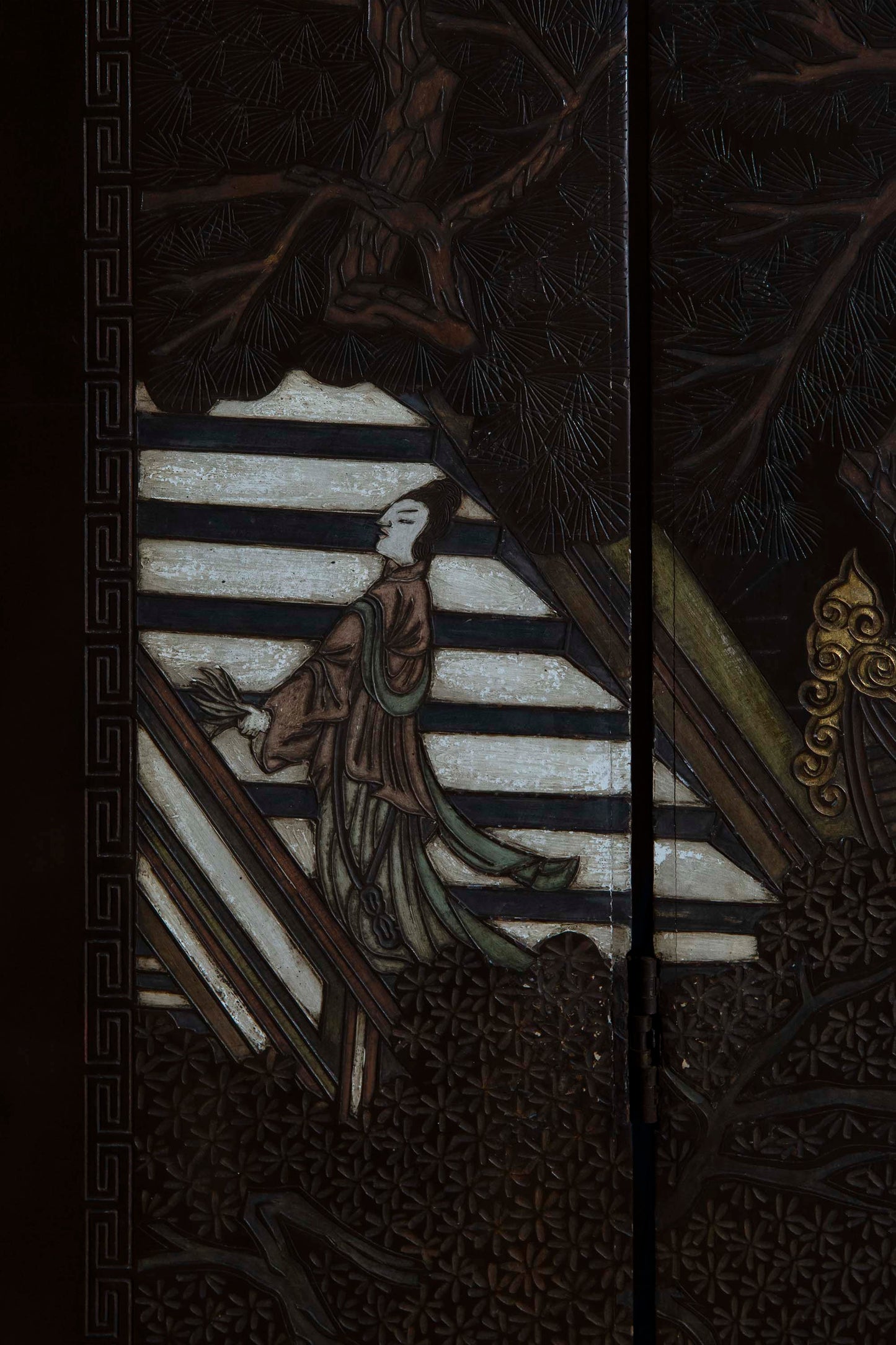
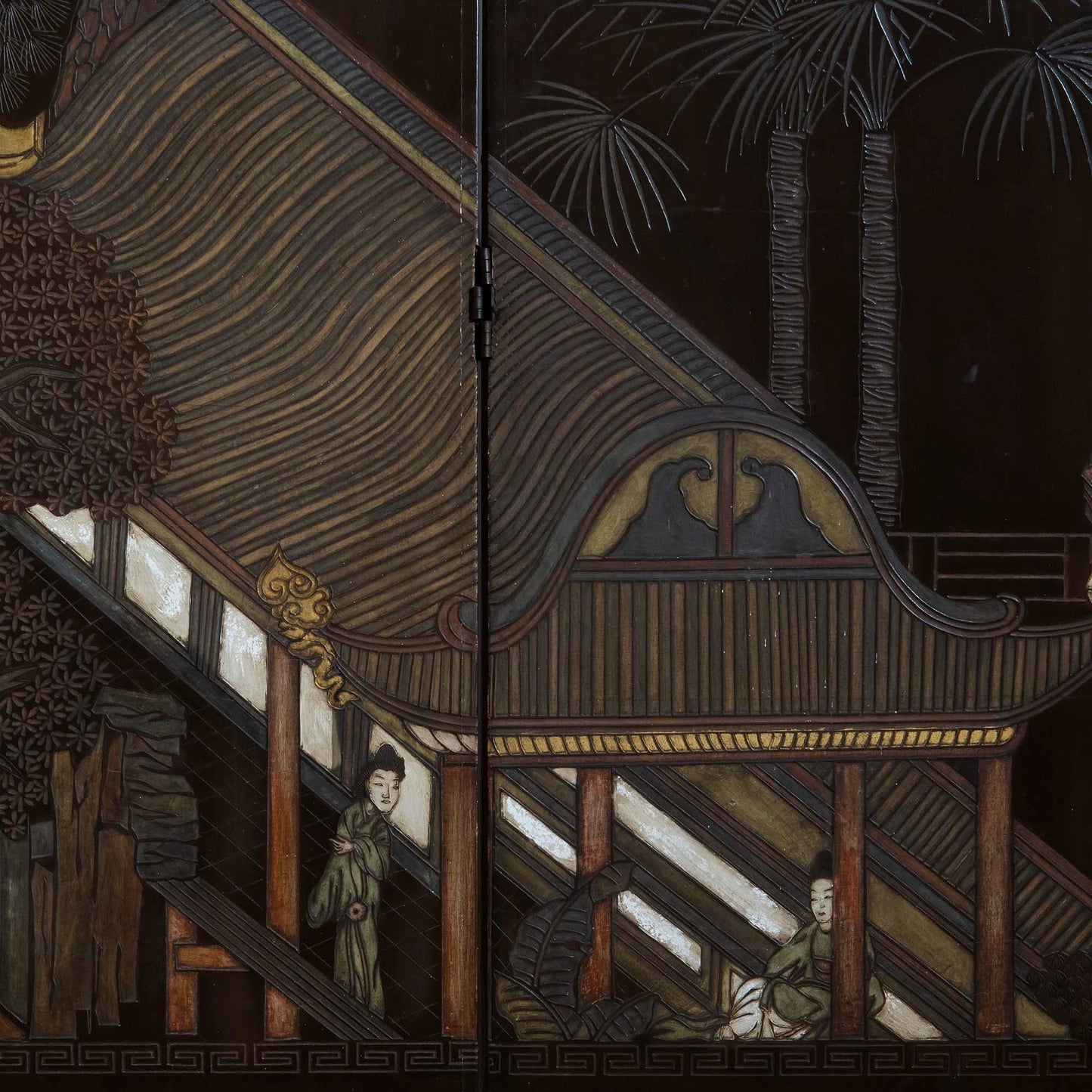
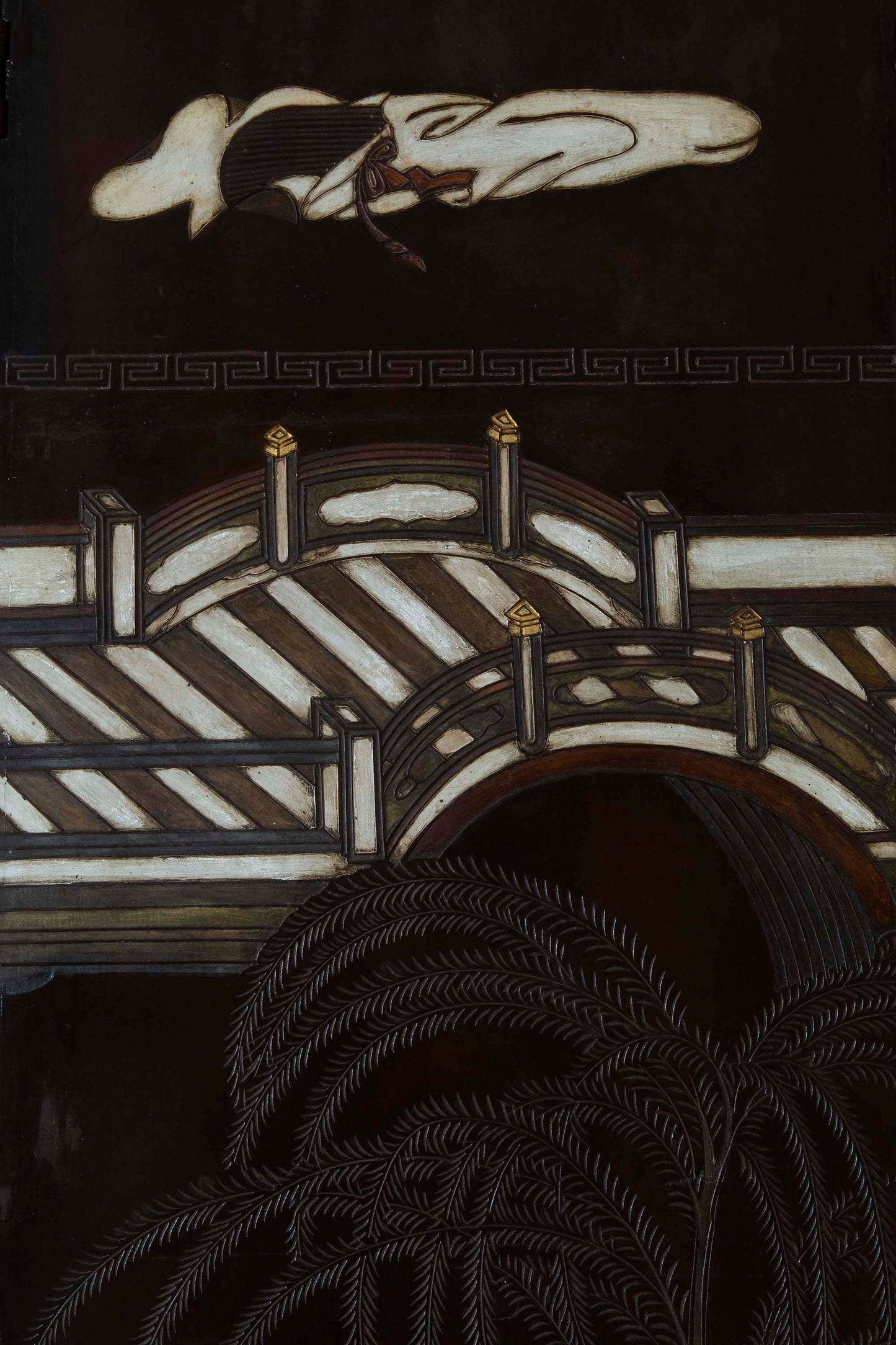
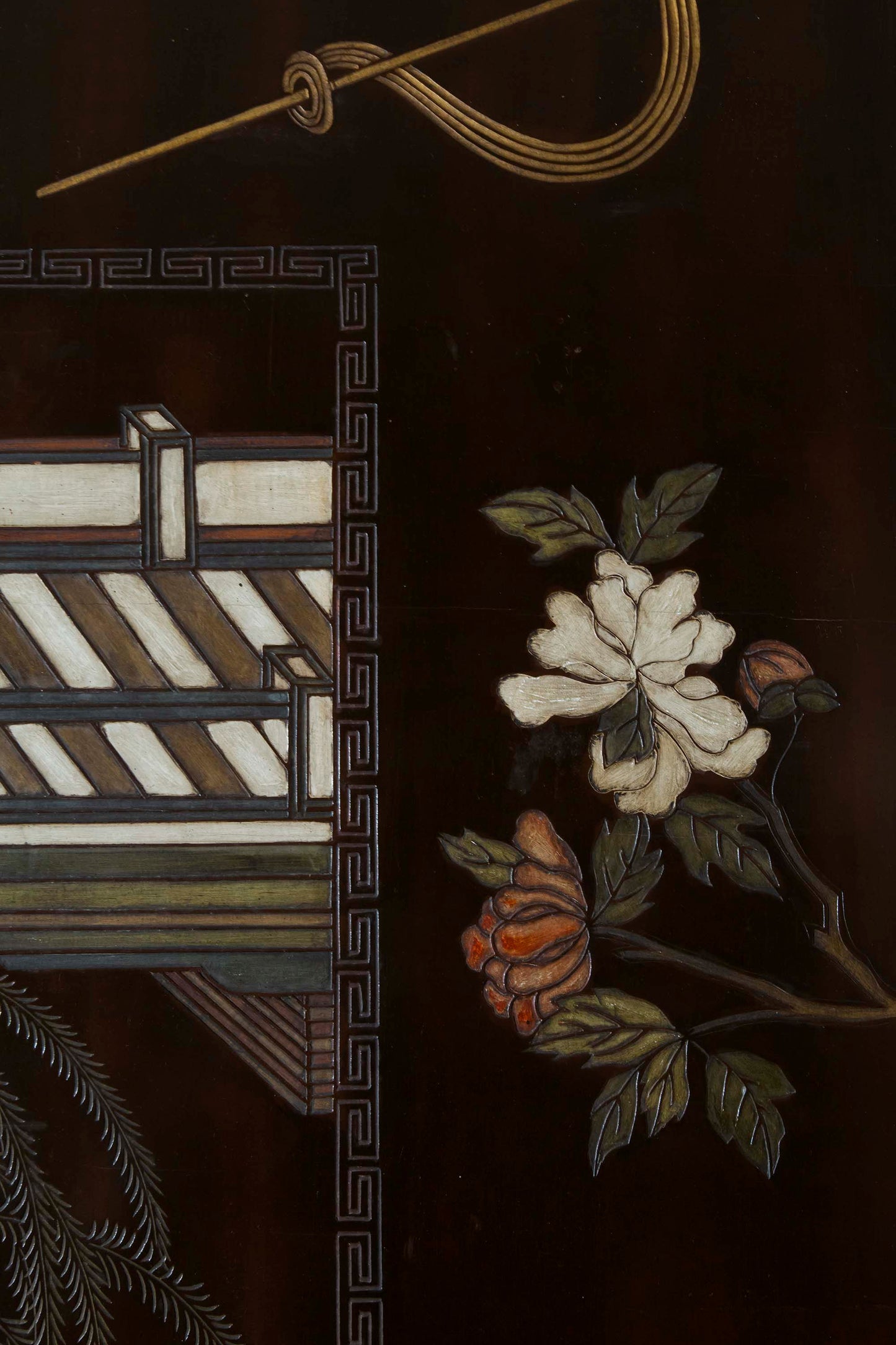
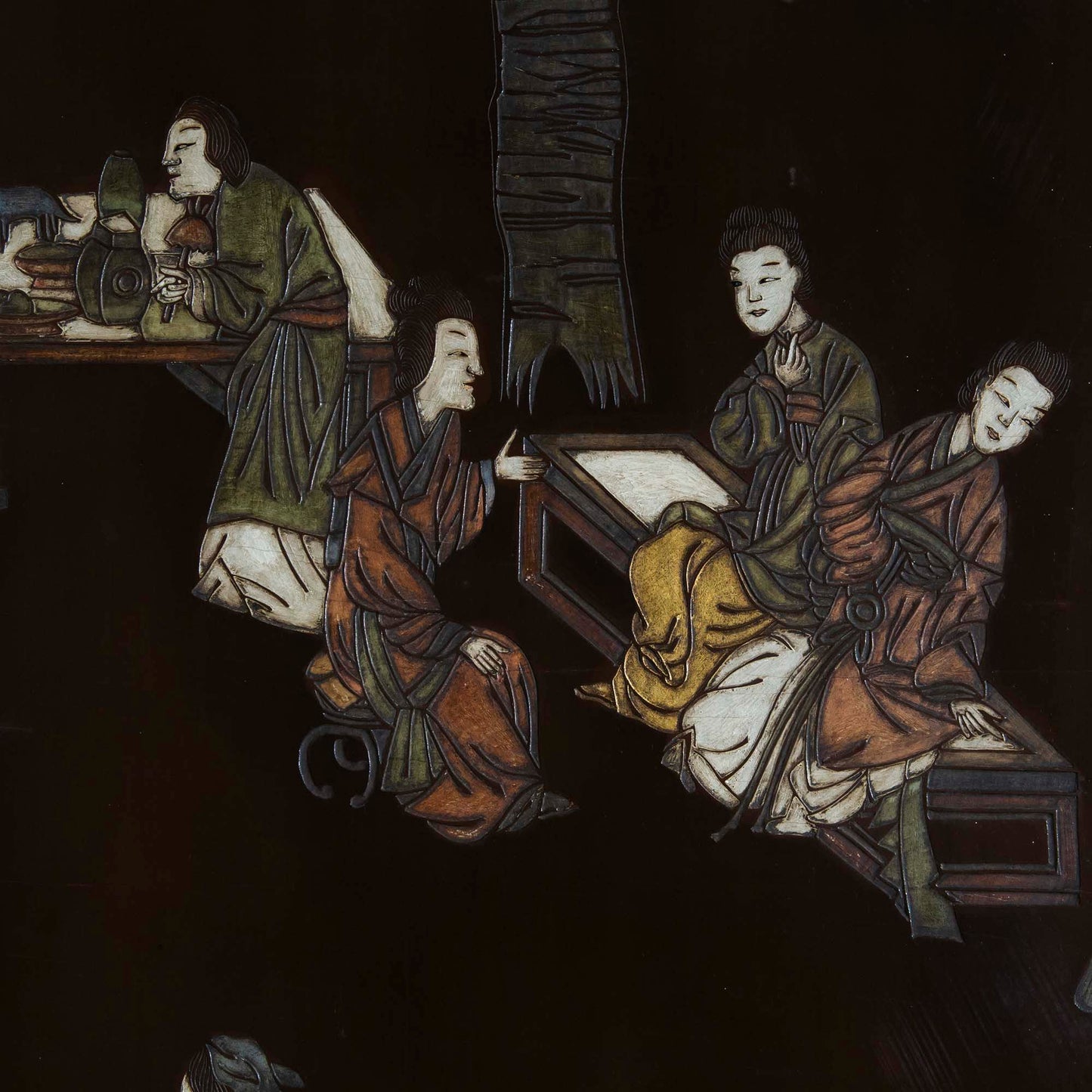
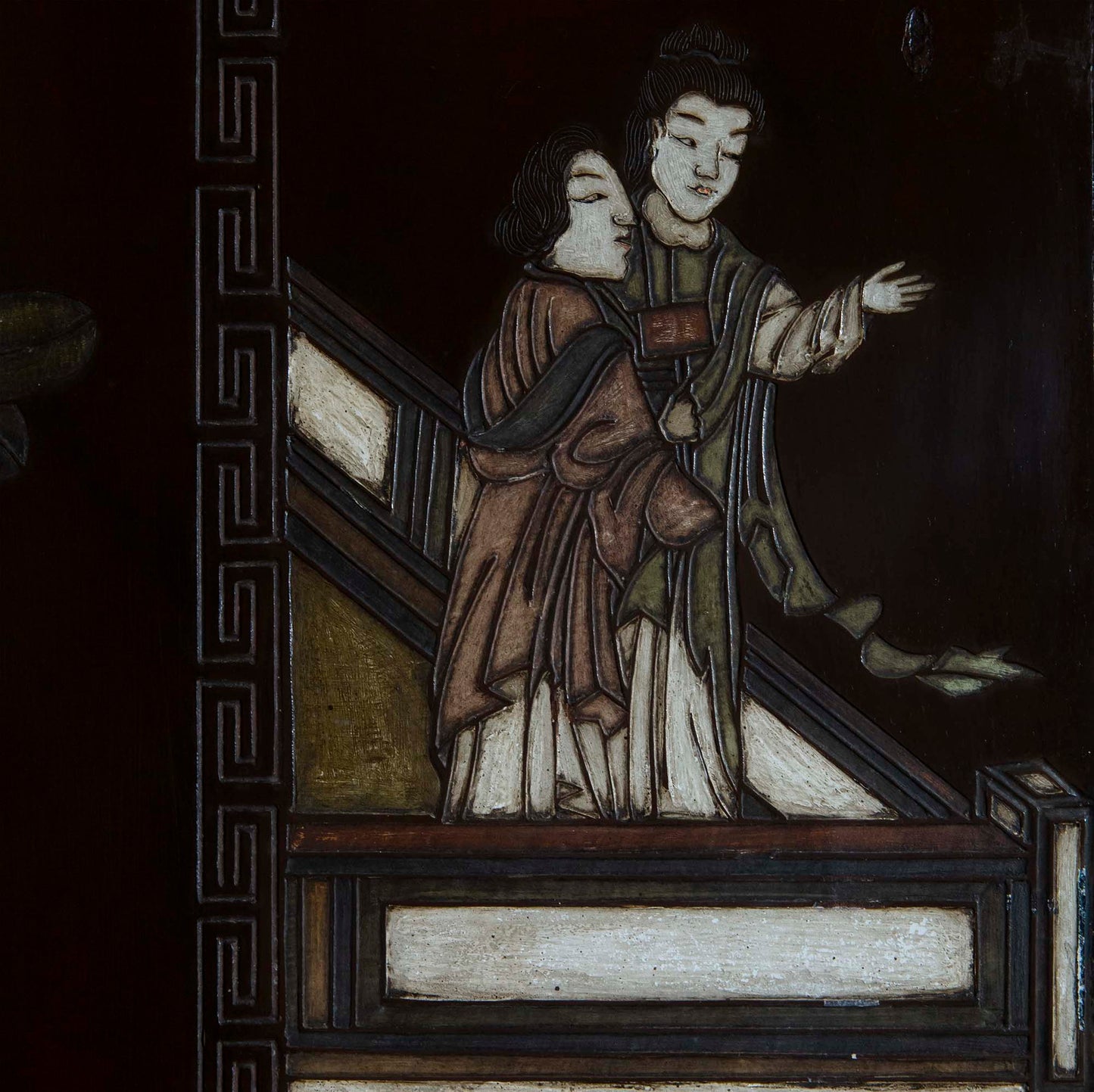
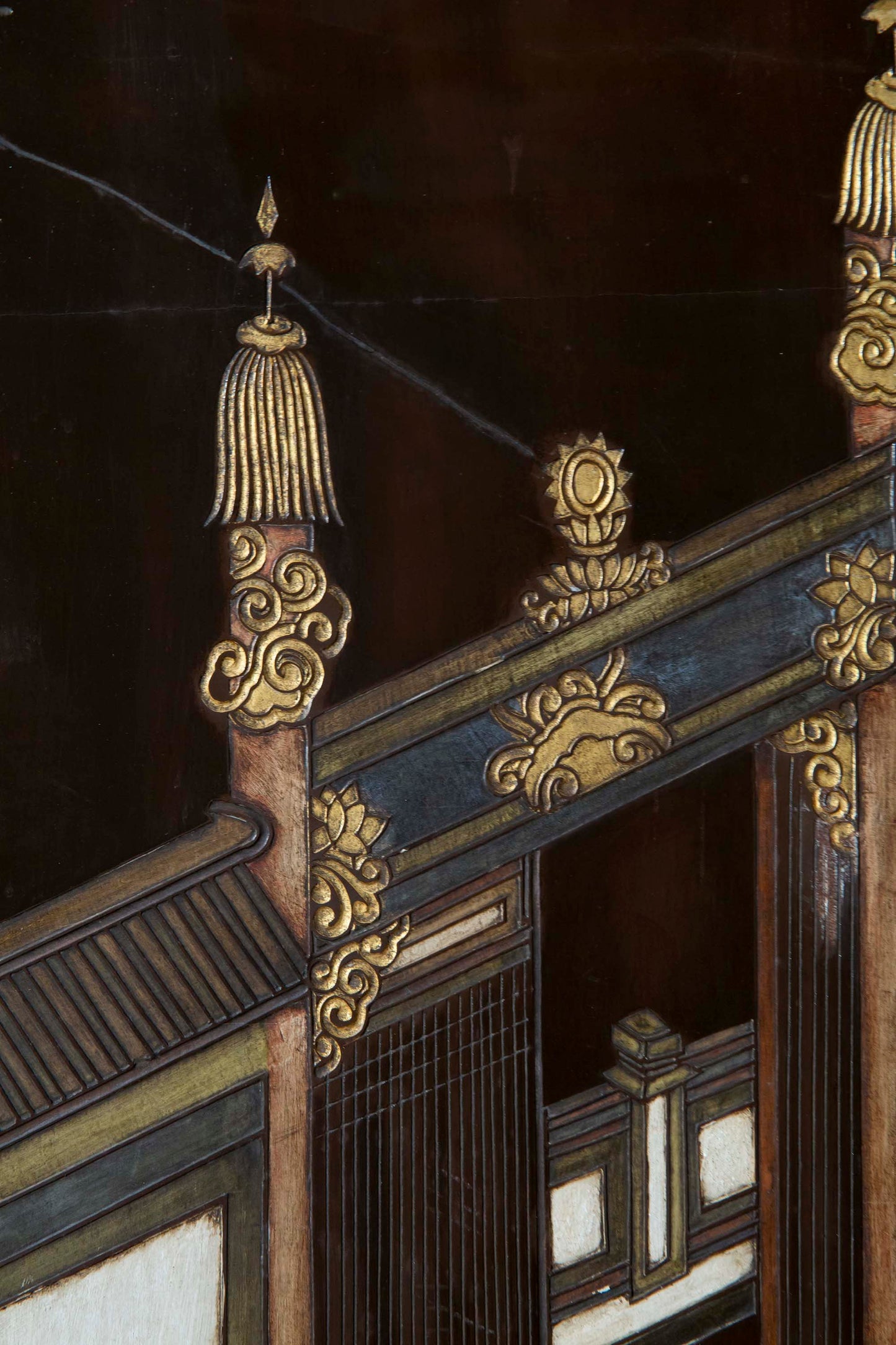
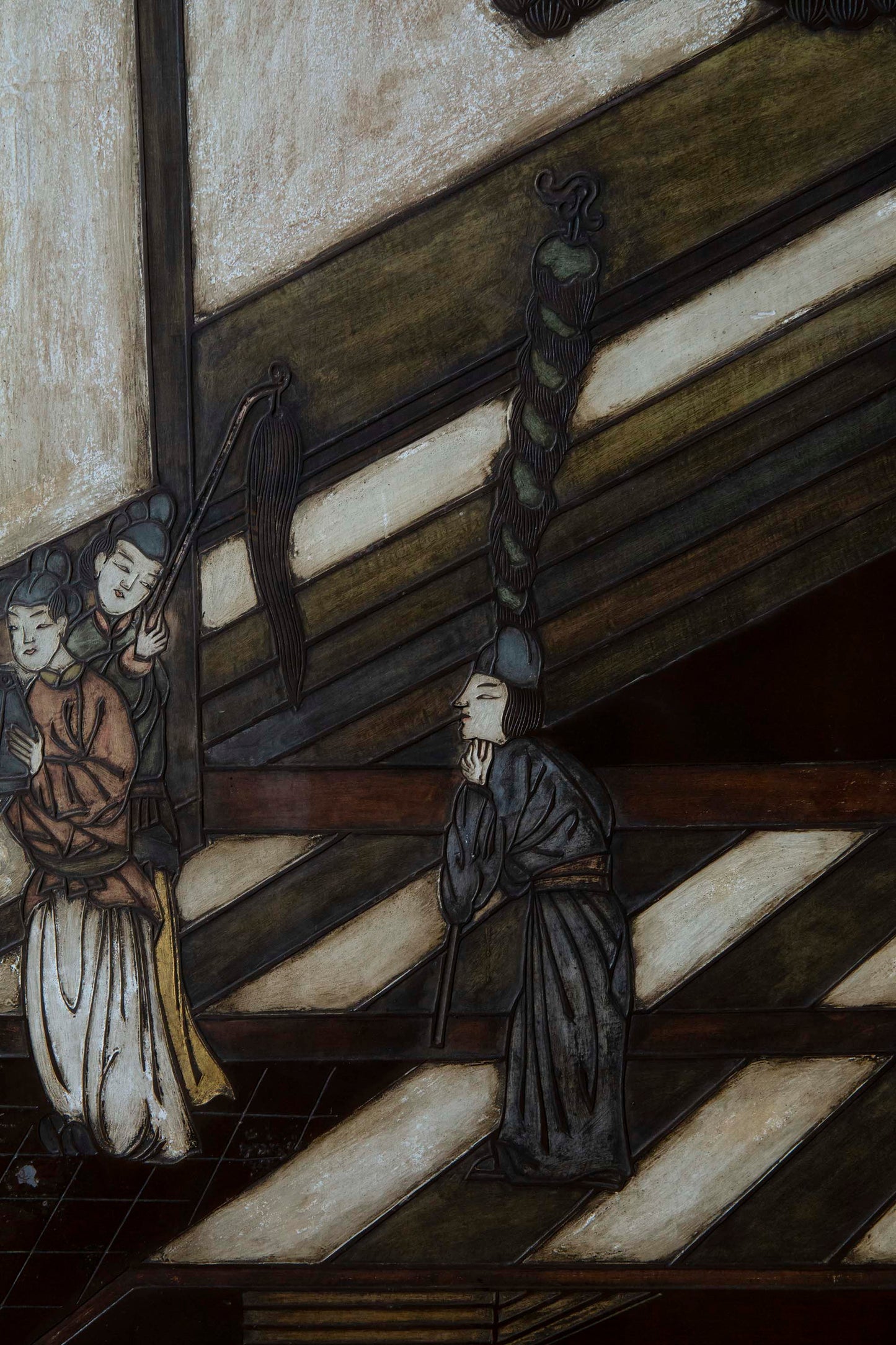
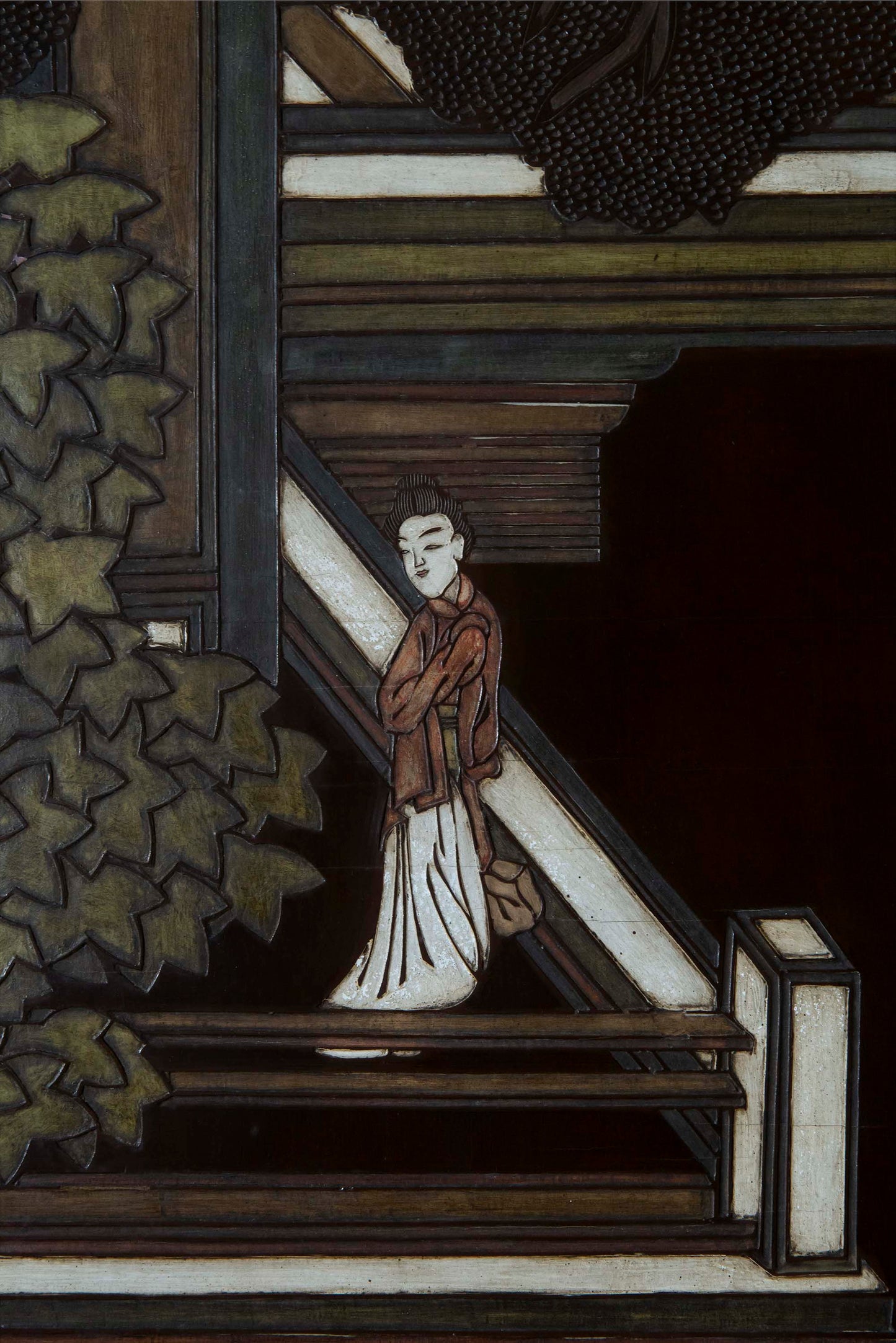
A superbly decorative six-panel lacquered 'Coromandel' screen, exquisitely carved and hand-painted with oriental figures, flowers and exotic beasts on a dark brown background, in the traditional 17th century manner. China, Canton, Qing dynasty, late 19th – early 20th century.
Why we like it
We like its impressive proportions which make it perfect for a feature wall, and the exquisite quality of decoration. The subtlety of colours lends a 'soft' look to the piece. The central motif depicts a scene set in the gardens of a Han dynasty palace, while the outer borders are decorated with the “one hundred antiques” motif interspersed with floral arrangements. In this regard, the present screen not only conveys auspicious meanings but also demonstrate the owner’s fine scholarly taste.
History
The term 'Coromandel', which is used to describe this particular type of lacquer technique (kuancai), is rather misleading. In the 18th century it was used commercially to indicate the place from which these objects were shipped to England through the East India Companies, and had no reference to China, the place of their origin. Similarly, Chinese painted wallpaper was often called 'India paper' in historic documants.
The kuancai lacquer technique, literally meaning “cut out colour” and found almost exclusively on screens, emerged in the 16th century to serve the domestic market. The iconographic elements were carved through the built-up coats of dark lacquer and filled with pigments and gold. Seventeenth century examples usually consisted of twelve panels, and were often employed in entrance halls or as room dividers or windscreens for gardens and terraces. They were often commissioned as gifts and depicted court scenes, episodes from the world of the immortals, panoramic or landscape views and auspicious symbols. This type of lacquerware was flourishing during the reign of the Kangxi emperor (1662-1722) and saw a revival in the 19th century.
Stylistically the present screen may be compared with the twelve-panel lacquer screen from the Kangxi period in the Victoria and Albert Museum illustrated by W. De Kesel and G. Dhont in Coromandel Lacquer Screens, ill. 23, pps 36-37.
Such luxurious items were popular in England during the height of fashion for oriental exoticism, called chinoiserie in Europe. In the 20th century, Coromandel screens still remained a staple in the European interior design. Coco Chanel had a collection of 32 rare Coromandel screens, which she proudly displayed in her home at 31 Rue Cambom, Paris. She one stated "I've loved Chinese screens since I was eighteen years old. I nearly fainted with joy when, entering a Chinese shop, I saw a Coromandel for the first time." Fifty years after her death, the apartment has been officially unveiled after several months of restoration work by French interior designer Jacques Grange.
Dimensions
Height: 87 in / 221 cm
Width: 106.5 in / 270 cm
Condition
Signs of age and wear throughout, occasional rubbing, chipping and touchups to decoration.














